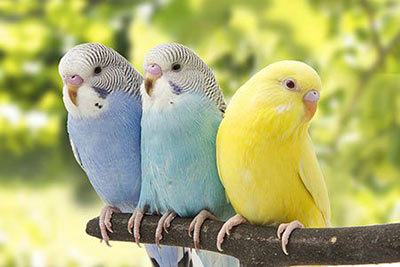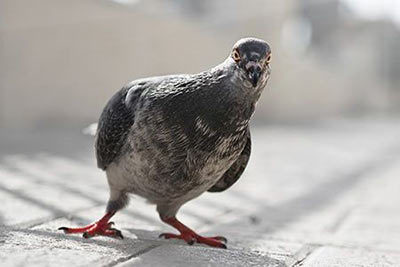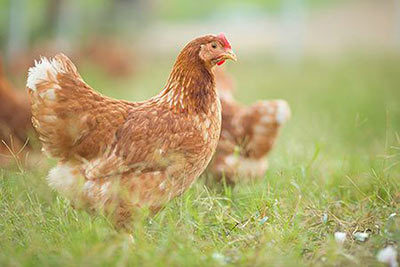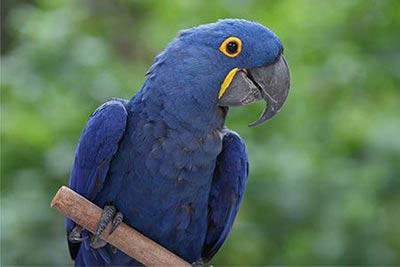Kingfisher
Kingfisher Facts
| Size | Up to 6.2 inch (16 cm) |
| Speed | Unknown |
| Weight | 1.1-1.6 oz (34-46 g) |
| Lifespan | 1-5 years |
| Food | Fish, insects, frogs, snails |
| Predators | Snakes |
| Habitat | Europe, Asia, Africa |
| Order | Coraciiformes |
| Family | Kingfishers |
| Subfamily | River kingfishers |
| Scientific name | Alcedo atthis |
| Characteristics | Also called “flying gem“ |
Main Characteristics
The river kingfisher family comprises about 40 species. Their beautiful, bright plumage is their most stunning characteristic. It shimmers blue, green, turquoise, red or golden. The common kingfisher with its blue-orange plumage is the best known of all kingfisher species.
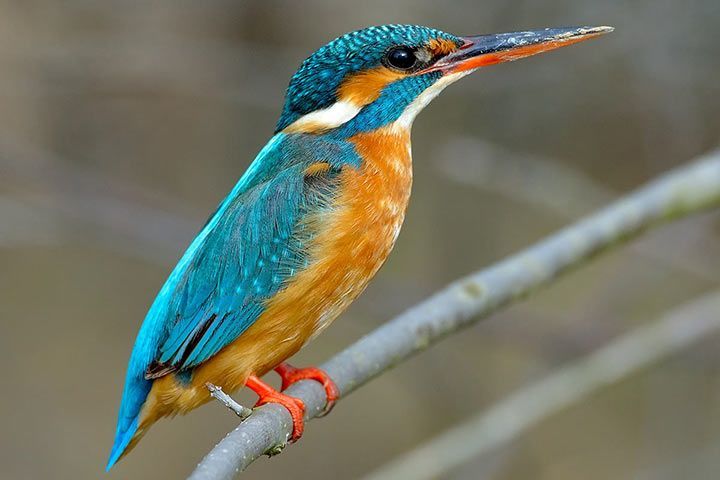
Anatomy and Appearance
Plumage
The plumage slightly shimmers. The feathers don't shine because of special color pigments but due to refractions of light. This also causes the color of the plumage to change depending on the incidence angle of the sunbeams.
Long Bill
The kingfisher often appears rather clumsy, as its bill seems to be too long and too big for its tiny body.
Feet
Kingfishers have short legs but strong feet! They spend most of the time comfortably perching on branches or stems. This means they do not need long legs. Instead, their feet are very sturdy, because they have to hold on tight.
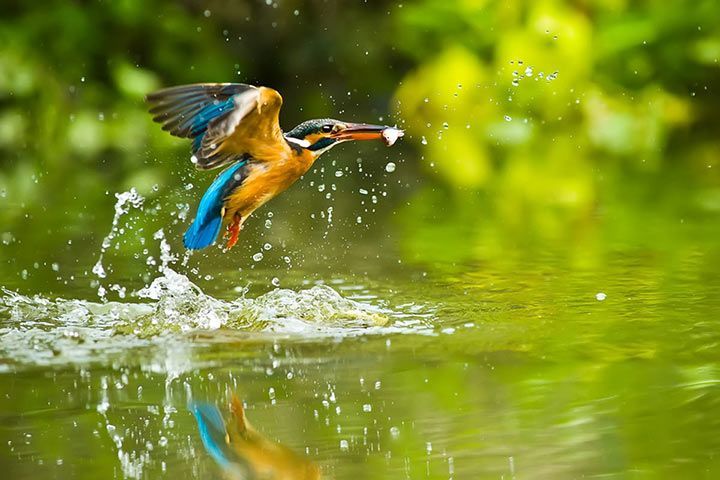
Diet
Kingfishers mainly feed on fish. But they also feed on snails and frogs. Depending on whether they are living in the forest, in grassy landscapes, or in the desert, they have different feeding habits. So they sometimes also take insects, spiders, reptiles and small mammals as a snack.
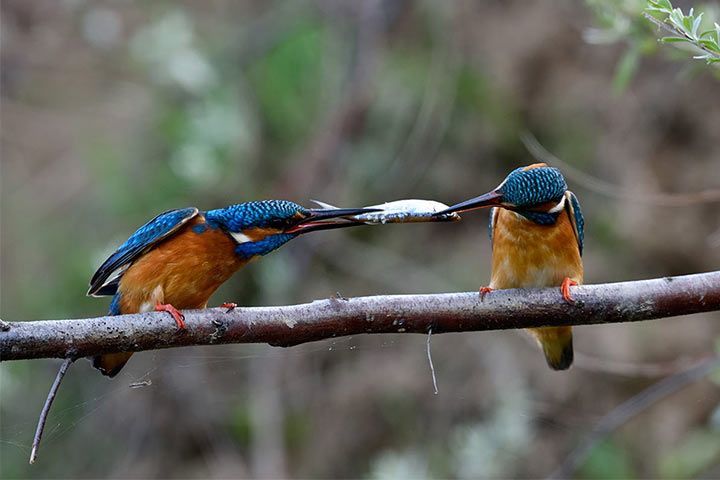
Behavior
How Do They Hunt?
We do not know whether the kingfisher is just lazy, practically-minded, or particularly clever: It has adopted a rather comfortable hunting strategy. While its unsuspecting prey is paddling through the water, the kingfisher comfortably perches on a branch and watches what is going on. If a fish comes into reach, the kingfisher dashes into the water like an arrow, snaps at the fish and returns to its branch. It beats the fish against a branch to kill it and then devours it head first.
They Hunt Big Prey
Many kingfishers also swallow prey that seems to be too big for their bills. The bill of the Amazon kingfisher only measures 2.7 inches (7 cm), but the bird can eat fishes that are 6.6 inches (17 cm) long!
They Like to Dress Up
Kingfishers care about their outer appearance, which is hardly surprising if you think of their magnificent plumage. They love to take extensive baths and clean their plumage while drying in the sun. They also love to groom their bill and sharpen it on branches – first one side, then the other – until they are pleased with the result. Vain little bird!
Senses and Abilities
Excellent Sense of Sight
Kingfishers can detect animals moving below the water surface. Water has the same effect as a magnifying glass. Thus, the fish sometimes appears to be nearer than it actually is. Yet, kingfishers are very good at estimating distances and hardly ever miss their prey. The sacred kingfisher can even detect prey at distances of up to 55 feet (90 meters).
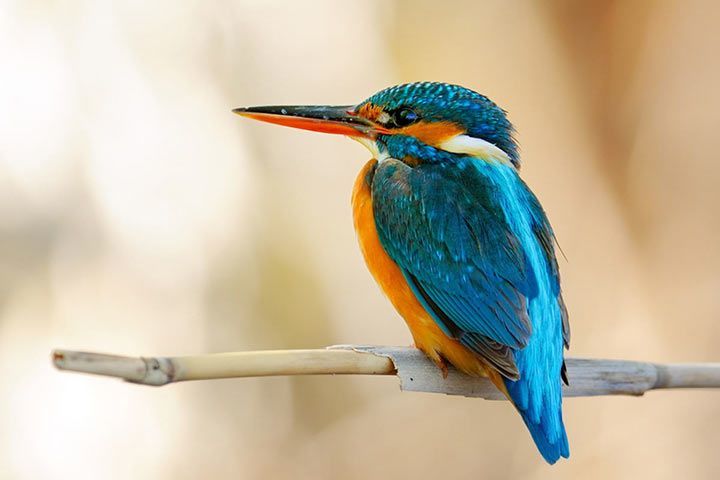
Reproduction
Kingfishers dig caves into the ground for breeding or they choose old tree holes or termite mounds. The parents work at the nesting place for three to seven days until it meets their demands. The record for the longest kingfisher nest is currently 28 feet (8.5 meters) and was dug by a giant kingfisher. Generally the nest is about 3-6 feet (1-2 meters) long. The nest chamber is only 8-12 inches (20-30 cm) wide and high. The parents provide the food until the young birds are big and strong enough to leave the cave. After a few days or weeks (depending on the species), the young birds can take care of themselves.
Fun Facts
Kingfishers Fight Predators
The sacred kingfisher is rather aggressive and almost fearless. It defends its nesting place even against much larger animals, such as weasels, cats, or dogs.















